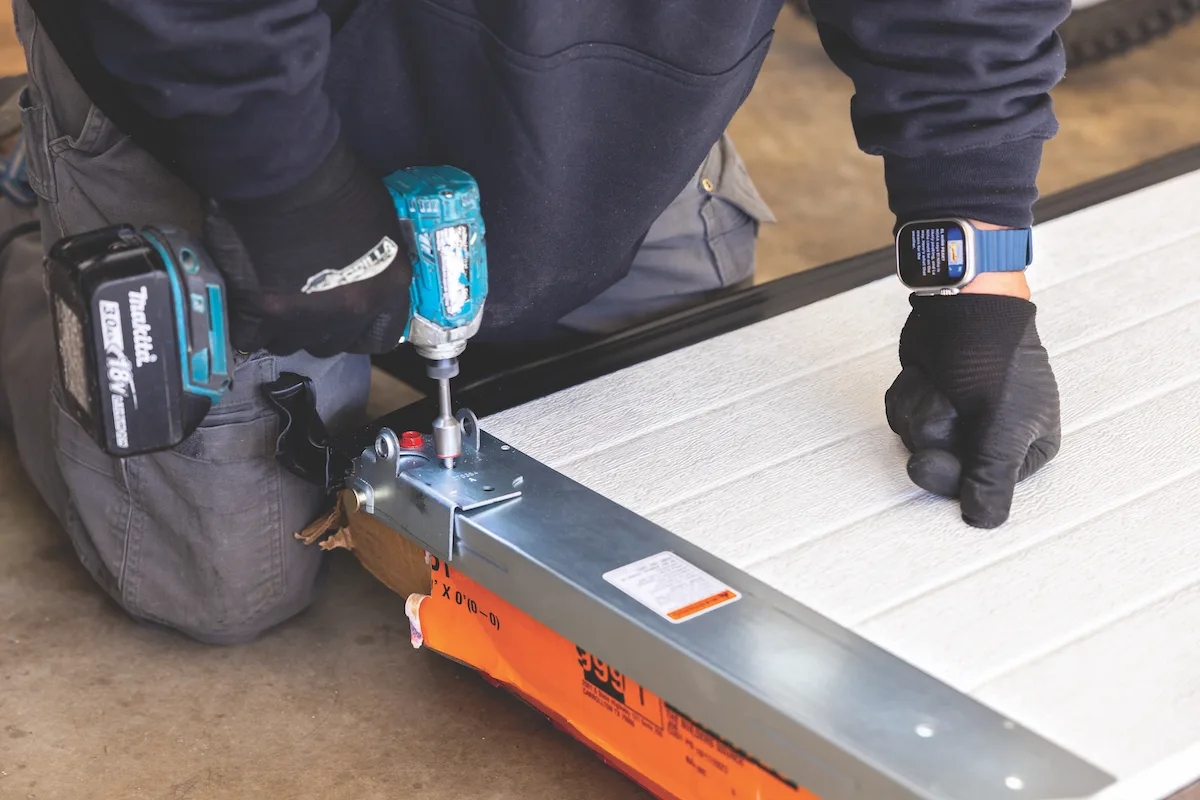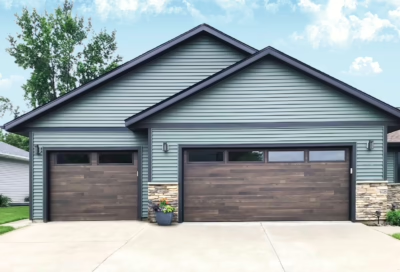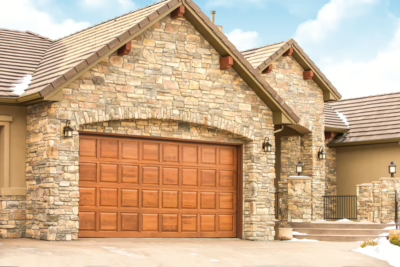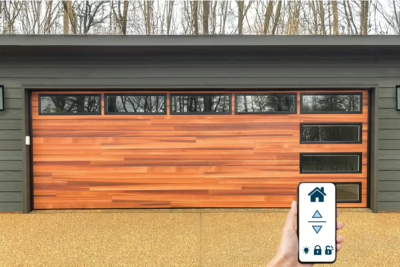Modern garage doors are designed for reliability — but like any mechanical system, they’re prone to wear and occasional failure. Whether it’s a noisy hinge or a door that won’t open at all, knowing how to identify and address common garage door problems can save time, prevent costly repairs, and improve safety.
In this article, we’ll walk through the most common garage door issues and quick, practical fixes to keep your system running smoothly.
1. Garage Door Won’t Close Completely
If your garage door stops short or reverses when closing, it’s often due to a sensor or obstruction issue.
Possible causes:
- Misaligned or dirty photo eye sensors
- Debris in the door track
- Incorrect travel or limit settings
Quick fixes:
- Clean the photo eyes with a soft cloth and ensure they’re aligned facing each other.
- Clear any obstructions from the tracks and floor.
- If needed, adjust the travel or close-force settings using your opener’s manual.
If these steps don’t solve the problem, a technician may need to inspect the opener or sensor wiring.
2. Broken or Worn-Out Springs
Torsion and extension springs carry the weight of your garage door, allowing it to lift and lower with minimal effort. When a spring breaks, the door may not open at all — or may slam shut suddenly.
Signs of a broken spring:
- A loud “bang” from the garage
- Door only lifts a few inches
- Visible gap in the torsion spring
Quick fix: This is not a DIY job. Springs are under extreme tension and can cause serious injury. Contact a qualified garage door technician for safe replacement.
3. Noisy Operation
A garage door that screeches, rattles, or grinds during use isn’t just annoying — it may be a sign of wear.
Common causes:
- Dry rollers or hinges
- Loose hardware
- Worn-out components
Quick fixes:
- Tighten any loose bolts and brackets.
- Lubricate all moving parts (rollers, hinges, tracks) with a silicone-based garage door lubricant.
- Replace metal rollers with nylon ones for quieter operation.
Routine lubrication and inspections can extend the life of your door and opener.
4. Uneven or Misaligned Door
If your door looks crooked or wobbles when moving, it’s likely misaligned. This can strain your opener and lead to further mechanical issues.
Causes:
- Bent or misaligned tracks
- Worn cables or rollers
- Uneven spring tension
Quick fixes:
- Clear any debris and inspect for bent tracks. If tracks are out of alignment, gently adjust them using a level and rubber mallet — and retighten the mounting brackets.
- If issues persist, a pro should check the spring tension and cable condition.
5. Remote Control or Wall Switch Doesn’t Work
If your garage door isn’t responding to the remote or wall switch, it may not be an opener issue — it could be electrical or signal-related.
Troubleshooting tips:
- Replace remote batteries and ensure you’re in range.
- Check that the opener is plugged in and hasn’t tripped a circuit breaker.
- Reprogram the remote or keypad if necessary.
If the wall switch works but the remote doesn’t (or vice versa), the problem is likely isolated to one device.
6. Door Opens Slowly or Hesitates
A garage door that opens slowly or gets stuck partway can be a sign of friction or aging components.
Causes:
- Dried-out rollers or hinges
- Weak motor or worn opener gears
- Cold weather affecting lubricants
Quick fixes:
- Lubricate the entire system — including springs, bearings, and rollers.
- Check your opener’s speed setting (if available).
- In older openers, gear kits may need to be replaced to restore full power.
7. Door Reverses Before Fully Closing
Garage doors are designed to auto-reverse if they detect an obstruction — but if they reverse too early, something may be off with the sensors or opener settings.
Likely issues:
- Misaligned or dirty sensors
- Close-force setting is too sensitive
Quick fixes:
- Clean and realign photo eyes.
- Use the opener’s manual to adjust the down-force sensitivity or travel limits.
8. Frozen Garage Door
In colder climates, moisture can freeze the door to the ground, preventing it from opening.
Solutions:
- Use the manual release handle to disengage the opener (pull gently down and back).
- Apply a hairdryer or heat gun at a safe distance to melt the ice.
- Prevent future issues by clearing snow buildup and applying silicone spray to the weather seal.
9. Broken or Frayed Cables
Garage door cables help control movement and weight distribution. Over time, they can fray, rust, or snap — leading to door imbalance or total failure.
Signs:
- Door hangs at an angle
- Visible fraying or slack in the cables
- Grinding or rubbing sounds near the drums
Quick fix:
Do not attempt to replace cables yourself. They are part of the spring system and require professional handling for safety and balance calibration.
10. The Door Won’t Open at All
When the garage door refuses to budge, it’s often related to power or a disengaged opener.
Check for:
- Disconnected power supply
- Tripped circuit breaker
- Manual release engaged
- Broken spring or opener motor failure
Quick fixes:
- Reconnect power or reset the breaker.
- Check that the manual release hasn’t been pulled.
- If the opener hums but doesn’t move, the motor gear may need replacement.
Real-World Scenario: One Fix Saved a Costly Repair
A homeowner in Fort Worth reported a grinding noise and delayed opening every morning in winter. Rather than replacing the opener motor — as initially recommended — a technician discovered dry rollers and a stiff bottom seal frozen to the concrete.
With a basic tune-up and weather seal replacement, the door operated like new. The fix took 45 minutes and saved over $600 in unnecessary parts and labor.
FAQs
How often should I service my garage door?
Basic inspections and lubrication should be done twice a year. Full professional servicing is recommended annually.
What’s the most common reason a garage door won’t close?
Misaligned or obstructed photo eyes are the most frequent cause of non-closing doors.
Can I replace a broken spring myself?
No. Torsion springs are extremely dangerous and should only be handled by trained professionals.
Final Thoughts
Garage door problems are common — but many are easy to spot and resolve with simple troubleshooting and proactive care. Regular maintenance, proper lubrication, and attention to early warning signs can prevent breakdowns and extend the life of your system.
If your issue goes beyond a quick fix, DuraServ’s garage door experts are ready to help with inspection, repair, or replacement services tailored to your needs.



